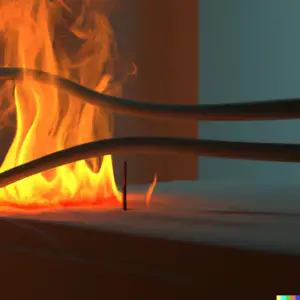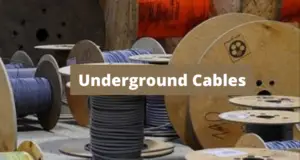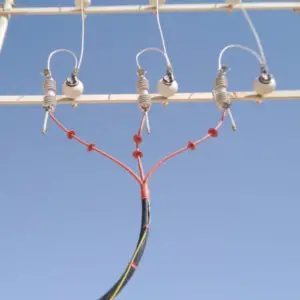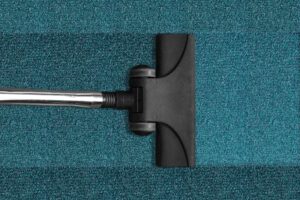Cable trays are a popular option for managing cables in various types of buildings and facilities. They provide a safe, organized, and efficient way to route and support cables, while also protecting them from damage and interference.
However, not all installations require cable trays, and it’s essential to understand when and why you should use them.
In this article, we’ll discuss the main factors that determine whether or not you should use a cable tray for cables. We’ll cover the following subheadings:
- Cable Quantity and Density
- Cable Type and Size
- Cable Routing and Accessibility
- Environmental Factors
- Compliance Requirements
Table of Contents
What is a cable tray?
A cable tray is a support system designed to manage and organize cables in buildings and facilities.
It consists of a series of trays or baskets that are mounted to walls, ceilings, or floors, and used to route and support cables.
Cable trays come in various sizes, materials, and configurations to accommodate different types of cables and installation requirements.
Factors to consider before using a cable tray
Cable Quantity and Density
The first thing to consider when deciding whether to use a cable tray is the number and density of the cables that need to be installed.
If you’re dealing with a small number of cables that are easy to manage and route, then you may not need a cable tray.
However, if you have a large number of cables that need to be routed over long distances or through multiple floors, then a cable tray can help simplify the installation process and reduce the risk of cable damage and interference.
Cable Type and Size
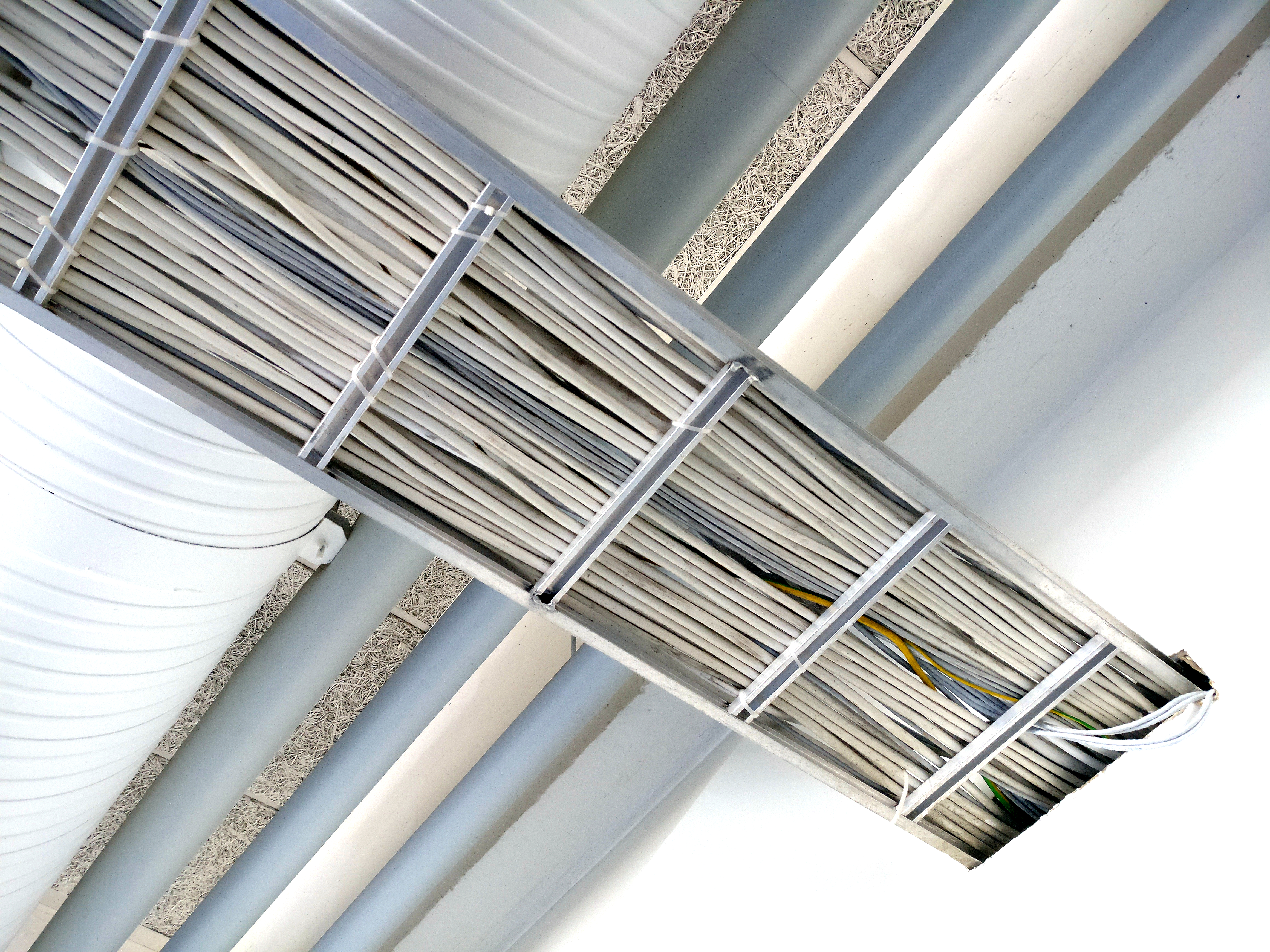
The second factor to consider is the type and size of the cables that need to be installed. Cable trays are designed to support various types of cables, including power, data, and communication cables, as well as fiber optic cables.
They can also accommodate different cable sizes, from small control cables to large power cables.
If you’re dealing with a mix of cable types and sizes, then a cable tray can help keep them organized and prevent tangling and damage.
Read my article Cable tray vs trunking, for more infromation.
Cable Routing and Accessibility
The third factor to consider is the routing and accessibility of the cables. Cable trays are typically installed overhead or along walls, which can make it easier to route and access the cables.
This can be especially useful in large buildings or facilities with complex cable routing requirements.
Additionally, cable trays can be designed with various configurations and accessories, such as bends, tees, and reducers, to accommodate different routing needs.
Environmental Factors
The fourth factor to consider is the environmental conditions in which the cables will be installed.
Cable trays can help protect cables from various environmental factors, such as moisture, dust, and chemicals.
They can also help prevent cable damage from vibration, impact, and temperature fluctuations. If your installation site is exposed to harsh environmental conditions, then a cable tray may be a better option than other cable management methods.
Compliance Requirements
The final factor to consider is compliance with relevant standards and regulations. Depending on the type of building or facility, there may be specific requirements for cable management and installation.
For example, the National Electrical Code (NEC) provides guidelines for cable tray installations, including cable spacing, support, and grounding requirements.
If you need to comply with specific regulations, then a cable tray can help ensure that your installation meets those requirements.
Advantages and Disadvantages of Cable Tray
Cable trays offer several advantages over other cable management methods, such as conduit and raceways. Some of the main advantages include:
- Cost-Effective: Cable trays are generally more cost-effective than other cable management methods, as they require fewer materials and labor for installation.
- Flexibility: Cable trays can accommodate various cable types and sizes, as well as different routing configurations and accessories.
- Accessibility: Cable trays provide easy access to cables for maintenance, repairs, and upgrades.
- Safety: Cable trays can help prevent cable damage and interference, as well as reduce the risk of electrical hazards.
However, cable trays also have some disadvantages that you should be aware of:
- Space Requirements: Cable trays require more space than other cable management methods, which can be a challenge in tight or crowded installation sites.
- Installation Complexity: Cable tray installations can be more complex and time-consuming than other methods, especially if custom configurations are needed.
- Aesthetics: Cable trays are not as aesthetically pleasing as other cable management methods, and may not be suitable for installations where appearance is a concern.
- Maintenance: Cable trays require regular maintenance to ensure that they remain clean and free of debris, which can be time-consuming and labor-intensive.
Should I Use Cable Tray with or without a Cover?
When deciding whether to use a cable tray with or without a cover, there are several factors to consider.
Cable tray covers can provide additional protection to cables, shielding them from dust, moisture, and other environmental factors. They can also improve the aesthetics of the installation, by concealing the cables from view.
However, there are some downsides to using cable tray covers.
- They can make it more difficult to access the cables for maintenance, repairs, and upgrades.
- They can also increase the cost of the installation, as covers are an additional expense.
However, if the cables are exposed to harsh environmental conditions or if appearance is a concern, then using a cable tray with a cover may be more appropriate.
IEEE, IEC, and NEC have recommendations and requirements for cable tray covers in certain applications.
- For example, the National Electrical Code (NEC) requires that cable tray covers be used for certain types of cables in certain locations. Section 392.10 of the NEC states that cable trays shall be provided with covers when the tray contains power cables, communication cables, or optical fiber cables in locations where there is a risk of physical damage or exposure to excessive moisture or corrosive substances.
- Similarly, the Institute of Electrical and Electronics Engineers (IEEE) recommends the use of cable tray covers in environments where the cables are exposed to extreme temperatures, moisture, dust, or other environmental hazards. The IEEE also recommends that cable tray covers be designed to allow for proper ventilation and heat dissipation, to prevent overheating.
- The International Electrotechnical Commission (IEC) also provides guidelines for the use of cable tray covers in various applications. IEC 61537, which provides general requirements for cable tray systems and cable ladder systems, states that cable tray covers should be designed to protect the cables from environmental hazards and physical damage, and should be made of materials that are suitable for the application.
In summary, IEEE, IEC, and NEC all have recommendations and requirements for cable tray covers in certain applications. It’s important to consult these guidelines and standards to ensure that cable tray covers are used appropriately and effectively in your installation.
Here are some links to the relevant resources:
- National Electrical Code (NEC): https://www.nfpa.org/NEC
- Institute of Electrical and Electronics Engineers (IEEE): https://www.ieee.org/
- International Electrotechnical Commission (IEC): https://www.iec.ch/
Specifically, the NEC standard related to cable tray is covered in Article 392, while the IEEE standard related to cable tray is IEEE 841. IEC 61537 provides general requirements for cable tray systems and cable ladder systems.
can I use a cable tray outdoors?
Yes, cable trays can be used outdoors, but they require proper consideration of environmental factors such as temperature, humidity, and exposure to sunlight, rain, and other weather conditions. The choice of materials and the type of coating used for the cable tray should also be suitable for outdoor use.
When using cable trays outdoors, it’s important to consider the impact of the cover on the temperature of the cables.
In some cases, the cover can cause overheating, especially if the ambient temperature is already high. This is because the cover can trap heat and prevent it from dissipating, which can cause the temperature inside the cable tray to rise.
To avoid overheating, it’s important to choose a cover that allows for proper ventilation and heat dissipation.
Some cable tray covers are designed with perforations or vents that allow for airflow, which can help regulate the temperature inside the cable tray. In addition, the distance between the cables and the cover should be appropriate, allowing for adequate airflow.
It’s also important to ensure that the cable tray is properly installed and maintained to prevent the buildup of debris or other obstructions that could impede proper airflow and increase the risk of overheating.
Conclusion
Here is a table summarizing when to use and not use a cable tray, based on the recommendations from IEEE, IEC, and NEC:
| When to use a cable tray | When not to use a cable tray |
|---|---|
| Routing and supporting power cables, communication cables, or optical fiber cables in locations where there is a risk of physical damage or exposure to excessive moisture or corrosive substances | For flexible cords, portable cables, or communications cables, when they are installed in a raceway or conduit system |
| Routing and supporting large numbers of cables, particularly in areas where space is limited | In situations where other cable management systems, such as conduit or wireways, may be more appropriate |
| Providing a flexible and adaptable cable management system that can be easily modified or expanded as needed | In areas where there is no risk of physical damage or exposure to environmental hazards, and where a simple cable management system is sufficient |
| Exposing cables to extreme temperatures, moisture, dust, or other environmental hazards | |
| Complying with specific regulations or codes that require the use of cable trays in certain applications |
I hope this table helps summarize the information for you! so that you can decide when you should and shouldn’t use a cable tray.
When deciding whether or not to use a cable tray, it’s important to consider factors such as cable quantity and density, cable type and size, cable routing and accessibility, environmental factors, and compliance requirements.
While cable trays offer several advantages over other cable management methods, they also have some disadvantages that should be taken into account.
Additionally, deciding whether to use a cable tray with or without a cover depends on several factors, including the level of protection needed and accessibility requirements.
here’s a summary table of when you should use a cable tray cover, based on the recommendations from IEEE, IEC, and NEC:
| When to Use a Cable Tray Cover |
|---|
| When cables are exposed to outdoor elements, including precipitation and ultraviolet (UV) radiation |
| When cables are installed in areas with high levels of airborne contaminants, such as dust or corrosive substances |
| When cables are located near sources of heat, such as steam pipes or process equipment |
| When cables are installed in areas accessible to unauthorized personnel, where physical protection is necessary |
| When complying with specific regulations or codes that require the use of cable tray covers in certain applications |
Don’t Leave Empty-Handed!
Install my Free Android App on Google Play:
Electrical Cables Most Common Tables “Cables Tables”
And, my Electrical Calculations App “Fast Electrical Calculator”
Discover more great content by subscribing to My channel
Looking to stay ahead of the game in the world of electrical engineering? Subscribe to my YouTube channel and gain access to exclusive content you won’t find anywhere else!
The staff I recommend
(Amazon Affiliate Links to products I believe are high quality):
- Economy 120 Volt/60Hz AC Power Source – Step-Down Voltage & Frequency Converters 1800W
- UNI-T Digital Multimeter Tester UT139C
- 50-Amp Extension Cord for RV “100ft”
- Voltage Stabilizer 110/220v
- Hair Dryer “best selling“
- TOSHIBA EM131A5C-BS Countertop Microwave Ovens
Disclaimer: This contains affiliate links to Amazon products. I may earn a commission for purchases made through these links.

